Caryn
 El Chichón was a volcano, in southern Mexico, that had not erupted for 130 years, meaning that no one who was alive on March 29, 1982 had ever seen it erupt. For most of the residents, who lived in the shadow of El Chichón, also known as Chinhonal, the 4,500 foot mountain seemed to pose no danger. Even when it did erupt, 130 years earlier, the eruption was minor. The people assumed that it was a dead volcano, and so ignored its potential for destruction and enjoyed the fertile soil its volcanic past provided.
El Chichón was a volcano, in southern Mexico, that had not erupted for 130 years, meaning that no one who was alive on March 29, 1982 had ever seen it erupt. For most of the residents, who lived in the shadow of El Chichón, also known as Chinhonal, the 4,500 foot mountain seemed to pose no danger. Even when it did erupt, 130 years earlier, the eruption was minor. The people assumed that it was a dead volcano, and so ignored its potential for destruction and enjoyed the fertile soil its volcanic past provided.
Then, in late 1981, two geologists, who were intrigued by hot springs and steaming gaps in the earth near the volcano, began an investigation that revealed increased seismic activity and the possibility of a major eruption of the volcano. Unfortunately, their report was ignored, because of the volcano’s quiet past. Thier complacence would  prove to be their downfall. Even when the ground began shaking on the night of March 28, the people did not heed the warning signs.
prove to be their downfall. Even when the ground began shaking on the night of March 28, the people did not heed the warning signs.
Then, at 5:15am the following morning, March 29, 1982, no one could miss the combination earthquake and eruption that exploded the mountain. The combination of the earthquake and the volcanic eruption turned the mountain into a crater. Ash was sent flying 60,000 feet in the air. About 150 people were killed when their roofs collapsed under raining volcanic debris. Two days later, ash from the eruption fell in Austin, Texas, many hundreds of miles to the north. The eruptions continued for over a week.
Most of the approximately 2,000 people killed by the eruption died from exposure to the pyroclastic flow, a  volatile mix of hot particles and gas. El Chichón lost its entire top, leaving only a large crater 1,000 feet deep, and less than 700 feet high, which was now shorter than the surrounding hills. Two more major eruptions occurred on April 3rd and 4th. In these eruptions, the debris was sent so high that it came down as virtual landslide on the surrounding villages. Trees and buildings were no match for the dirt and rocks. The debris also blocked streams, causing flooding in the area. Nine entire villages were destroyed and more than 100 square miles of farmland were unusable for years. Overall, the energy released by the eruptions, which were similar in scope to the Mount Saint Helens eruptions in Washington in 1980, was the equivalent of 8,000 one kiloton atomic bombs.
volatile mix of hot particles and gas. El Chichón lost its entire top, leaving only a large crater 1,000 feet deep, and less than 700 feet high, which was now shorter than the surrounding hills. Two more major eruptions occurred on April 3rd and 4th. In these eruptions, the debris was sent so high that it came down as virtual landslide on the surrounding villages. Trees and buildings were no match for the dirt and rocks. The debris also blocked streams, causing flooding in the area. Nine entire villages were destroyed and more than 100 square miles of farmland were unusable for years. Overall, the energy released by the eruptions, which were similar in scope to the Mount Saint Helens eruptions in Washington in 1980, was the equivalent of 8,000 one kiloton atomic bombs.
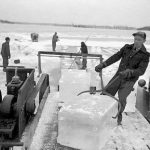 Before the 1830’s, food was preserved by salting, spicing, pickling or smoking. The people back then had no refrigerators, so butchers slaughtered meat only for the day’s trade, as preservation for longer periods was not practical unless you made jerky or something. Dairy products and fresh fruits and vegetables subject to spoilage were sold in local markets since storage and shipping farm produce over any significant distance or time was impossible. Milk was often hauled to city markets at night when temperatures were cooler. Ale and beer making required cool temperatures, so its manufacture was limited to the cooler months. The solution to these problems was found in the harvesting of natural ice.
Before the 1830’s, food was preserved by salting, spicing, pickling or smoking. The people back then had no refrigerators, so butchers slaughtered meat only for the day’s trade, as preservation for longer periods was not practical unless you made jerky or something. Dairy products and fresh fruits and vegetables subject to spoilage were sold in local markets since storage and shipping farm produce over any significant distance or time was impossible. Milk was often hauled to city markets at night when temperatures were cooler. Ale and beer making required cool temperatures, so its manufacture was limited to the cooler months. The solution to these problems was found in the harvesting of natural ice.
Before the invention of refrigerators in the early twentieth century, ice was harvested every winter from the lakes and stored in large ice houses, the proprietors then sold the ice to shippers of fresh fish, waterfowl, and produce for train deliveries to large cities. The ice harvesting process was labor intensive, requiring 20-100 men for one to four weeks. I suppose it was good temporarily, but was not permanent work.
Nineteenth-century ice harvesting began well before the actual cutting. As soon as the ice was strong and thick enough to support horses and equipment, work forces cleared away the insulating snow, sometimes many times, if necessary, to encourage the formation of stackable, thicker blocks. When the ice was thick enough, the field was marked in squares, using a horse-drawn marker, which scored slightly deeper into the ice, and finally the blocks were cut by hand with the use of large-toothed one-man saws. The blocks were then floated to the large adjacent commercial ice house for stacking, or to a railroad loading ramp for shipping. The system worked pretty well, and lasted throughout the century, the major change being the late introduction of rotary saws that replaced hand-cutting, making the job much easier.
The latter half of the 19th century saw many attempts to perfect manufactured ice methods. The Louisiana Ice Manufacturing Company appears to have been the first one to operate regularly, one of its claims being a price considerably lower than that of natural ice. Others followed. By 1925 factory-made ice had entered the realm of big business, and natural ice had become a thing of the past…just like that. In the 19th century commercial ice houses were constructed to provide ice for general use, to stock private ice houses when supplies from the local pool were scarce and later to produce “frozen” food. Some of these ice house’s were really a barn within a barn, with 3 feet of sawdust and hay between the inner and outer walls. City dwellers had ice delivered to them by horse and wagon. The iceman had to lift from 25 to 100 pound blocks, according to the order, which was placed by the consumer putting a numbered card in the window that corresponded with the number of pounds of ice they wanted. The ice was weighed on a spring scale on the truck, but an experienced delivery man could estimate the weight. The ice was carried to a kitchen using ice tongs, and chipped with chisels to fit the compartment of the ice box.
Delivery men were known for their brawn, as they hauled heavy blocks of ice all day long, and often up flights of stairs. Nevertheless, occasionally two women teams delivered the ice. They often had access to the kitchen when no one was home, and they simply placed the ice appropriately. Some city apartments used a suspended box (a small version of the ice box) outside the kitchen window, its contents available to the cook through the raised window; others kept an ice chest outdoors on the porch, or a handsome oak refrigerator in the kitchen. Ice wagons were great for children playing in summer’s heat. They loved when the iceman dropped his ice tongs and used his ice pick to chop a small piece of ice for them to suck on, similar to today’s ice cream trucks.
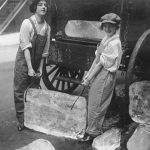
Residential ice boxes, many home-made, were of oak, pine, or ash wood lined with zinc, slate, porcelain, galvanized metal or wood. The insulator between the walls was charcoal, cork, flax straw or mineral wool. Still, the ice lasted only one day. Wooden boxes lined with tin or zinc and insulated with various materials including cork, sawdust, and seaweed were used to hold blocks of ice and “refrigerate” food. A drip pan collected the melt water…and had to be emptied daily. Electric refrigerators and freezers seriously hurt the ice industry. Although the first models were marketed before 1920. It would be a while before everyone had them, so ice delivery continued to be used, but declined yearly.

 My niece, Amanda Reed has had a busy 2018, which is nothing unusual for her. Amanda has a great group of friends who love to get together and have a great time. It doesn’t matter if they are hanging out at somebody’s house or spending the weekend on the mountain or at the lake. They always have a great time. One thing that is always in the weekend plans…getting together with their friends. When you are social people that is just a way of life, and it’s a good thing that their daughter, Jaydn is a social person too. The cool thing about their friends is that all the kids are welcome.
My niece, Amanda Reed has had a busy 2018, which is nothing unusual for her. Amanda has a great group of friends who love to get together and have a great time. It doesn’t matter if they are hanging out at somebody’s house or spending the weekend on the mountain or at the lake. They always have a great time. One thing that is always in the weekend plans…getting together with their friends. When you are social people that is just a way of life, and it’s a good thing that their daughter, Jaydn is a social person too. The cool thing about their friends is that all the kids are welcome.
The new year started out a few days early, when the whole gang went the mountains for a snow-filled play week designed to bring in the new year right. The snow was deep and fluffy…perfect for snowmobiling. On tap was everything from snowshoeing, to snowmobiling, to a few drinks, and probably, a few snowball fights too. Much fun was had by all, from parents, to kids, to dogs. They even built a fire and cooked their hot dogs on the open flame. Now that is a true dedication to the outdoors and the camping spirit.
week designed to bring in the new year right. The snow was deep and fluffy…perfect for snowmobiling. On tap was everything from snowshoeing, to snowmobiling, to a few drinks, and probably, a few snowball fights too. Much fun was had by all, from parents, to kids, to dogs. They even built a fire and cooked their hot dogs on the open flame. Now that is a true dedication to the outdoors and the camping spirit.
With Amanda’s birthday being today, her girlfriends decided that they all needed a girls weekend in Deadwood. It was planned for weeks, and everyone was very excited. While they were there, they gambled, and visited the Prairie Berry Winery. And as they say, “What girls’ trip doesn’t come with some snow-cross!” I would have to say, probably one I was on, because it is too cold, and I’m a wimp, but not these girls. Cold and snow is almost their middle name…in the winter anyway. Having good friends to hang out with is what life is all about 
 for Amanda and her family.
for Amanda and her family.
I think that most of Amanda’s dreams have come true. A couple of years ago, she got a VW Bug, and since she has always wanted one, she was absolutely thrilled with it. For her, it is the perfect car. Then with her job in the banking industry, she is pretty happy with her life. She has the two people in it that she loves the most, and of course, her parents too. Yep, life is good for her and her bunch. Today is Amanda’s birthday. Happy birthday Amanda!! Have a great day!! We love you!!
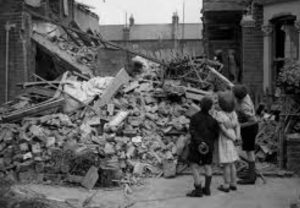 The Blitz was a German bombing offensive against Britain in 1940 and 1941, during World War II. The term was first used by the British press and is the German word for lightning. When the Germans bombed London in the Blitz bombing, the nerves of the people were very much on edge. They spent most of their nights in hiding in the subway tunnels. When they emerged, they had no idea what to expect. Most of them knew that their beloved city would be very different than it was before, and they knew that, in reality, it may never be the same. Yes, it could be rebuilt, but it would never…never be the same. The adults felt sick a they looked at the city they loved, but the
The Blitz was a German bombing offensive against Britain in 1940 and 1941, during World War II. The term was first used by the British press and is the German word for lightning. When the Germans bombed London in the Blitz bombing, the nerves of the people were very much on edge. They spent most of their nights in hiding in the subway tunnels. When they emerged, they had no idea what to expect. Most of them knew that their beloved city would be very different than it was before, and they knew that, in reality, it may never be the same. Yes, it could be rebuilt, but it would never…never be the same. The adults felt sick a they looked at the city they loved, but the  adults were not the only people who were looking at the devastation.
adults were not the only people who were looking at the devastation.
Some of the saddest pictures taken after the Blitz bombings, were those taken of the children. I can’t imagine what must have been going through their minds as they looked at the devastation that was once their home. They had spent so many wonderful hours playing in their bedrooms, and now they had no bedrooms, or even a house for that matter. Their home had been reduced to a pile of rubble. Sitting there looking at what little is left, some children find a little bit of solace in the fact that a doll or something similar managed to survive the carnage…and they feel somehow blessed. And, of course, they are blessed, because for so many others, there is nothing left.
I’m sure that those little ones looked to their parents, hoping to see a spark of hope, or a little bit of encouragement, but all they saw was a look of shock and disbelief on the  faces of their parents. That only served to create a deeper sense of concern in the children. What was going to happen to them now? Where would they live? And the really sad thing was that their parents are wondering the same things. These are the faces of war. We often think of the soldiers, usually facing off with the enemy. Yes, sometimes we think of the civilians, but most of us almost try not to think of them, because we can imagine what they are going through. The news photographers, however, have to see the civilians. They have to photograph the destruction. It is their job, but when we see those stories, with their necessary pictures, we really see how war affects the civilians, especially the children. And we are horrified.
faces of their parents. That only served to create a deeper sense of concern in the children. What was going to happen to them now? Where would they live? And the really sad thing was that their parents are wondering the same things. These are the faces of war. We often think of the soldiers, usually facing off with the enemy. Yes, sometimes we think of the civilians, but most of us almost try not to think of them, because we can imagine what they are going through. The news photographers, however, have to see the civilians. They have to photograph the destruction. It is their job, but when we see those stories, with their necessary pictures, we really see how war affects the civilians, especially the children. And we are horrified.
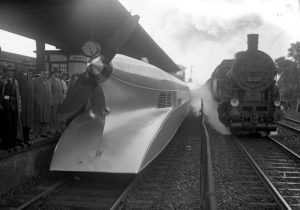 The Schienenzeppelin or rail zeppelin was an experimental railcar which resembled the Zeppelin airship. It was designed by the German aircraft engineer Franz Kruckenberg in 1929. The Schienenzeppelin was powered by a propeller located at the rear. The railcar accelerated to 143 mph setting the land speed record for a petroleum powered rail vehicle. Only one Schienenzeppelin was ever built due to safety concerns. It was never really put into service and was finally dismantled in 1939. The propeller, which powered the railcar, was also the source of concern for its safety. It was exposed, and so the concern was that someone might be hit by he propeller.
The Schienenzeppelin or rail zeppelin was an experimental railcar which resembled the Zeppelin airship. It was designed by the German aircraft engineer Franz Kruckenberg in 1929. The Schienenzeppelin was powered by a propeller located at the rear. The railcar accelerated to 143 mph setting the land speed record for a petroleum powered rail vehicle. Only one Schienenzeppelin was ever built due to safety concerns. It was never really put into service and was finally dismantled in 1939. The propeller, which powered the railcar, was also the source of concern for its safety. It was exposed, and so the concern was that someone might be hit by he propeller.
Anticipating the design of the Schienenzeppelin, the earlier Aerowagon, an experimental Russian high-speed railcar, was also equipped with an aircraft engine and a propeller. On 24 July 1921, a group of delegates to the First Congress of the Profintern, led by Fyodor Sergeyev, took the Aerowagon from Moscow to the Tula collieries to test it. Abakovsky was also on board. Although they successfully arrived in Tula on their maiden run, the return route to Moscow was not successful. The Aerowagon derailed at high speed near Serpukhov, killing six of the 22 people on board. A seventh man later died of his injuries.
The Schienenzeppelin railcar was built at the beginning of 1930 in the Hannover-Leinhausen works of the German Imperial Railway Company. The work was completed by Fall of that year. The vehicle was 84 feet 9 3/4 inches long and had just two axles, with a wheelbase of 64 feet 3 5/8  inches. The height was 9 feet 2 1/4 inches. It had two conjoined BMW IV 6-cylinder petroleum aircraft engines. The driveshaft was raised seven-degrees above the horizontal to give the vehicle some downwards thrust. The body of the Schienenzeppelin was streamlined, having some resemblance to the era’s popular Zeppelin airships, and it was built of aluminum in aircraft style to reduce weight. The railcar could carry up to 40 passengers. Its interior was designed in Bauhaus-style.
inches. The height was 9 feet 2 1/4 inches. It had two conjoined BMW IV 6-cylinder petroleum aircraft engines. The driveshaft was raised seven-degrees above the horizontal to give the vehicle some downwards thrust. The body of the Schienenzeppelin was streamlined, having some resemblance to the era’s popular Zeppelin airships, and it was built of aluminum in aircraft style to reduce weight. The railcar could carry up to 40 passengers. Its interior was designed in Bauhaus-style.
On May 10, 1931, the Schienenzeppelin exceeded a speed of 120 miles per hour for the first time. Afterwards, it toured Germany as an exhibit to the general public throughout Germany. There was still some concern due to the trains speed. On June 21, 1931, it set a new world railway speed record of 143 miles per hour on the Berlin–Hamburg line between Karstädt and Dergenthin, which was not surpassed by any other rail vehicle until 1954. The railcar still holds the land speed record for a petroleum powered rail vehicle. This high speed was attributable, in addition to other things, to its low weight, which was only 44800 pounds.
While several modifications were attempted, ultimately the Schienenzeppelin was scrapped. Due to many problems with the Schienenzeppelin prototype, the Deutsche Reichsbahn-Gesellschaft decided to go their own way in developing a high-speed railcar, leading to the Fliegender Hamburger (Flying Hamburger) in 1933. This new design was much more suitable for regular service and served also as the basis for later railcar developments. However, many of the Kruckenberg ideas were based on the experiments with Schienenzeppelin and high-speed rail travel, found their way into later DRG railcar designs.
The failure, if it could be called that, of Schienenzeppelin has been attributed to everything from the dangers of 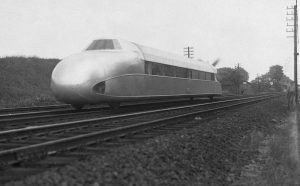 using an open propeller in crowded railway stations to fierce competition between Kruckenberg’s company and the Deutsche Reichsbahn’s separate efforts to build high-speed railcars. Another disadvantage of the rail zeppelin was the inability to pull additional wagons to form a train, because of its construction. Furthermore, the vehicle could not use its propeller to climb steep gradients, as the flow would separate when full power was applied. Thus an additional means of propulsion was needed for such circumstances. Safety concerns have been associated with running high-speed railcars on old track network, with the inadvisability of reversing the vehicle, and with operating a propeller close to passengers.
using an open propeller in crowded railway stations to fierce competition between Kruckenberg’s company and the Deutsche Reichsbahn’s separate efforts to build high-speed railcars. Another disadvantage of the rail zeppelin was the inability to pull additional wagons to form a train, because of its construction. Furthermore, the vehicle could not use its propeller to climb steep gradients, as the flow would separate when full power was applied. Thus an additional means of propulsion was needed for such circumstances. Safety concerns have been associated with running high-speed railcars on old track network, with the inadvisability of reversing the vehicle, and with operating a propeller close to passengers.

 It’s hard for me, and even harder for his mom, my niece Machelle Moore to believe that her son, my grand nephew, Weston Moore is eighteen today. Weston is a busy guy these days. He likes to participate in several sports, including football and track and is pretty good in both. Weston is a tall, broad shouldered young man, and that makes him tough to go through on the football field. In track, he is participating in shot put and discus, where his strong shoulders are an asset.
It’s hard for me, and even harder for his mom, my niece Machelle Moore to believe that her son, my grand nephew, Weston Moore is eighteen today. Weston is a busy guy these days. He likes to participate in several sports, including football and track and is pretty good in both. Weston is a tall, broad shouldered young man, and that makes him tough to go through on the football field. In track, he is participating in shot put and discus, where his strong shoulders are an asset.
Weston got a job bagging groceries at Blair’s in Powell, so now he has gas money for school and all the activities he is involved in…and any social events, of course. Weston gets himself up most days to go to “0” hour and leaves the house at 6:30am. I guess that if you are dedicated to what you are doing, you do what you have to do to make it happen. Weston has proven that he has what it takes to make his dreams come true. Weston has plans to work lots of hours this summer so he can save p money for a new vehicle.
You see, while this has been a pretty good year for Weston, his car has not fared so well. Being parked in the high school parking lot, has taken a toll on his car. It has been hit a few times…after he hit a parked truck that is. His parents, Steve and Machelle went over to the accident scene, and Weston’s glasses were half way out the window. They got knocked off when he looked out the window while he hit the truck. It was not one of Weston’s better days. Steve had to tie up his front bumper with zip ties so that it didn’t fall all the way off. While the bumper looks better than it did, it now remains a constant reminder of the accident. I guess that if 
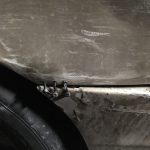 that is the worst that ever comes of Weston’s early driving experience, then he is doing pretty good. Most kids have an accident in the first few years of driving, so we can all just be thankful that the damage wasn’t worse and no one was hurt. All in all, I’m sure that Weston must be a pretty good driver, because he’s only had one accident in two years of driving. As an insurance agent, I can tell you that I have seen much worse from drivers, and some of them have far more experience than Weston has. Today is Weston’s 18th birthday. Happy birthday Weston!! Have a great day!! We love you!!
that is the worst that ever comes of Weston’s early driving experience, then he is doing pretty good. Most kids have an accident in the first few years of driving, so we can all just be thankful that the damage wasn’t worse and no one was hurt. All in all, I’m sure that Weston must be a pretty good driver, because he’s only had one accident in two years of driving. As an insurance agent, I can tell you that I have seen much worse from drivers, and some of them have far more experience than Weston has. Today is Weston’s 18th birthday. Happy birthday Weston!! Have a great day!! We love you!!
 For a long time, people in the 19th century, living in urban apartments, didn’t regularly take their children outside so they could get some fresh air. Then, the doctors started to recommend that these children really needed to get outside for fresh air. Now that doesn’t necessarily mean that the parents were real excited about the idea of loading up their child and taking them for a walk…just to get the recommended amount of fresh air. Nevertheless, it was important, as the doctors told them that it would strengthen their immune system, and with the number of pandemics that had gone around, the parents really tried to do whatever they could to make this happen.
For a long time, people in the 19th century, living in urban apartments, didn’t regularly take their children outside so they could get some fresh air. Then, the doctors started to recommend that these children really needed to get outside for fresh air. Now that doesn’t necessarily mean that the parents were real excited about the idea of loading up their child and taking them for a walk…just to get the recommended amount of fresh air. Nevertheless, it was important, as the doctors told them that it would strengthen their immune system, and with the number of pandemics that had gone around, the parents really tried to do whatever they could to make this happen.
While physicians such as Dr. Luther Emmett Holt advised simply placing an infant’s basket near an open window, some parents took it a step further. Enter the Baby Cage. The baby cage was just what it sounded like. It was a platform, with chicken wire all around it to keep the baby in. This whole contraption was then suspended outside the window…even if the window was on the sixth floor or something. 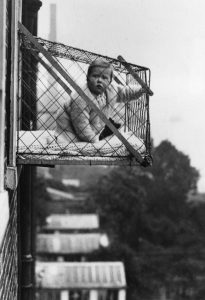 Personally, I can’t imagine hanging my baby outside my window for a dose of fresh air, but it was an actual thing in those days.
Personally, I can’t imagine hanging my baby outside my window for a dose of fresh air, but it was an actual thing in those days.
Eleanor Roosevelt, who by her own admission “knew absolutely nothing about handling or feeding a baby,” bought a chicken-wire cage after the birth of her daughter, Anna. She hung it out the window of her New York City apartment and placed Anna inside for her naps…until a concerned neighbor threatened to report her to the authorities. I would think so. If the brackets that suspended the cage to the window came loose…so long baby. I couldn’t find any incidence of such a thing happening, however. The first commercial patent for a baby cage was filed in 1922 by Emma Read of Spokane, Washington. The cages became popular in London in the 1930s among apartment dwellers without access to backyards. Ultimately, their popularity declined. It is possible that this was connected to safety concerns. As I said, I can imagine. I would have nightmares about that if it were my child.
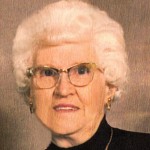 There is a strange phenomenon that occurs sometimes, after someone we love passes away. I’m not talking about seeing their ghost, because I don’t believe in ghosts. Besides, the people I have seen, since the passing of loved ones, are real. I have noticed this after the passing of several people, and in some ways it is odd, but in other ways it is comforting, because it shows me that the person I love is still living in my memory files. In reality, I suppose it’s just me, finding characteristics in people around me that remind me of a lost loved one.
There is a strange phenomenon that occurs sometimes, after someone we love passes away. I’m not talking about seeing their ghost, because I don’t believe in ghosts. Besides, the people I have seen, since the passing of loved ones, are real. I have noticed this after the passing of several people, and in some ways it is odd, but in other ways it is comforting, because it shows me that the person I love is still living in my memory files. In reality, I suppose it’s just me, finding characteristics in people around me that remind me of a lost loved one.
After my great aunt, Gladys Pattan Byer Cooper was killed in a plane crash, I used to see an older woman at the mall, just about every weekend. She reminded me so much of Aunt Gladys that I could almost imagine it was really her. Of course, the woman didn’t look exactly like Aunt Gladys, but she looked enough like her to bring back memories of years gone by, and a little sadness at the way she had passed. It seemed so senseless, so unbelievable that it could have happened in such a manner. One minute Aunt Gladys was fine and taking a trip to a family reunion, and the next, her life was over.
I find it strange that this phenomenon doesn’t seem to happen all the time. It only seems to happen in deaths that don’t make sense to me. I’m not looking for people who remind me of the person who died unexpectedly, they just suddenly appear. As I said, they are real people, please understand that. They just have similar features to my loved one who is gone. It doesn’t scare me, but rather it is just a strange reminder that my loved one existed. That their life was important. That their memory is, and always will be with me.

Since my 2nd cousin once removed, Jackie Morton passed away on March 9, 2018, I have thought about her many times. She was such a sweet, loving girl, and her passing simply makes no sense to me. One day she was fine, and the next day she was gone. Then, a few days later, while walking at the mall, I saw someone who really reminded me of Jackie. Had I not known better, I could have really thought it was her…though I knew it was not, for it could not be her. She has gone to Heaven now. Nevertheless, Jackie’s memory, like the memory of her great grandmother, my Great Aunt Gladys will always be with me.
I thought I saw you at the mall today. Though I knew it could not be you at all, for you are gone. I miss you so, and I wish you could still be here on Earth with us. But sadly, that is not to be, and never could be. You will always be with us in our thoughts, and in our memories…and we will always miss you so.
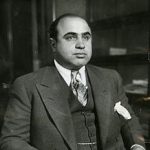
 Seldom, if ever, do you see a minor political party that is able to obtain national support for their way of doing things, but that did happen in the 1920s. The Prohibition Party (PRO) is a political party in the United States best known for its historic opposition to the sale or consumption of alcoholic beverages. It is the oldest existing third party in the US. The party was an integral part of the temperance movement. I suppose it depends on which side you were on, as to how you feel about alcohol, but the reality is that they most likely didn’t have the support of the majority of the American citizens.
Seldom, if ever, do you see a minor political party that is able to obtain national support for their way of doing things, but that did happen in the 1920s. The Prohibition Party (PRO) is a political party in the United States best known for its historic opposition to the sale or consumption of alcoholic beverages. It is the oldest existing third party in the US. The party was an integral part of the temperance movement. I suppose it depends on which side you were on, as to how you feel about alcohol, but the reality is that they most likely didn’t have the support of the majority of the American citizens.
Nevertheless, on Saturday, January 7, 1920, the Manchester Guardian reported with a level of mild shock on one of the most extraordinary experiments in modern democratic history. “One minute after midnight tonight,” the story began, “America will become an entirely arid desert as far as alcoholics are concerned, any drinkable containing more than half of 1 per cent alcohol being forbidden.” In fact, the Volstead Act, which prohibited the sale of “intoxicating liquors,” had come into operation at midnight the day before. But the authorities had granted drinkers one last day, one last session at the bar, before the iron shutters of Prohibition came down.
I don’t really know how I feel about the comparison between the prohibition of alcohol, and the war on drugs (specifically Marijuana), but one thing can be said for sure. With the law that made these things illegal, came, by natural progression, the gangs or gangsters, who illegally made a way for those things to be obtained by the people. As to Prohibition, the 20s were filled with bootleggers, gangsters, and illegal purchases of alcohol…hence the Roaring Twenties.
Across the United States, many bars and restaurants marked the demise of the demon drink by handing out free glasses of wine, brandy and whisky. Others saw one last opportunity to make a killing, charging an eye-watering “20 to 30 dollars for a bottle of champagne, or a dollar to two dollars for a drink of whisky”. In some establishments, mournful dirges played while coffins were carried through the crowds of drinkers. In others, the walls were hung with black crepe. And in the most prestigious establishments, the Guardian noted, placards carried the ominous words: “Exit booze. Doors close on Saturday.” It was like an Irish wake for the deceased.
The prohibition of alcohol lasted for almost 14 years, and with it came a violent era in out country’s history. Gangsters like Al Capone, Bugsy Segal, Lucky Luciano, Meyer Lansky, Johnny Torrio, Arnold Rothstein, Bugs Moran, Enoch “Nucky” Johnson, and the mafia sprung into action…refusing to be railroaded. Prohibition’s largely Protestant champions, a large proportion of whom were high-minded, middle-class women. were the do-gooders of the day. Often deeply religious, they saw Prohibition as a kind of social reform, a crusade to clean up the American city and restore the founding virtues of the godly republic. The gangsters, gangs, and the mafia saw it as a declaration of war, and acted accordingly. Stills were built, and bootleggers financed. 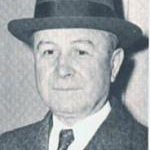
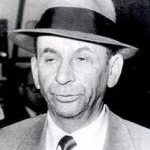 Before long violence broke out as the runners were caught and the gangsters lost their product. Nevertheless, for 14 long years, Prohibition persisted, until there was finally enough pull in Congress. The 21st Amendment to the United States Constitution is ratified on December 5, 1933, repealing the 18th Amendment and bringing an end to the era of national prohibition of alcohol in America. At 5:32pm EST, Utah became the 36th state to ratify the amendment, achieving the requisite three-fourths majority of states’ approval. Pennsylvania and Ohio had ratified it earlier in the day.
Before long violence broke out as the runners were caught and the gangsters lost their product. Nevertheless, for 14 long years, Prohibition persisted, until there was finally enough pull in Congress. The 21st Amendment to the United States Constitution is ratified on December 5, 1933, repealing the 18th Amendment and bringing an end to the era of national prohibition of alcohol in America. At 5:32pm EST, Utah became the 36th state to ratify the amendment, achieving the requisite three-fourths majority of states’ approval. Pennsylvania and Ohio had ratified it earlier in the day.

 The other day I watched a documentary about the Yukon Gold Rush. Each prospector was required by the Canadian authorities, to bring a year’s supply of food in order to prevent starvation. In all, their equipment weighed close to a ton, which for most had to be carried in stages by themselves. Together with mountainous terrain and cold climate, this meant that those who persisted did not arrive until summer 1898. It wasn’t that the border patrol was being difficult, but rather that they knew that if these prospectors were to survive the extreme weather of the Yukon Territory, they were going to need every bit of those supplies, and sometimes more. It is estimated that 100,000 prospectors who headed north to the Yukon Territory between 1897 and 1898. Of those 100,000, it is estimated that 30,000 to 40,000 actually arrived in the gold fields, and of those who actually reached Dawson City during the gold rush, only around 15,000 to 20,000 finally became prospectors. The odd were certainly stacked against them.
The other day I watched a documentary about the Yukon Gold Rush. Each prospector was required by the Canadian authorities, to bring a year’s supply of food in order to prevent starvation. In all, their equipment weighed close to a ton, which for most had to be carried in stages by themselves. Together with mountainous terrain and cold climate, this meant that those who persisted did not arrive until summer 1898. It wasn’t that the border patrol was being difficult, but rather that they knew that if these prospectors were to survive the extreme weather of the Yukon Territory, they were going to need every bit of those supplies, and sometimes more. It is estimated that 100,000 prospectors who headed north to the Yukon Territory between 1897 and 1898. Of those 100,000, it is estimated that 30,000 to 40,000 actually arrived in the gold fields, and of those who actually reached Dawson City during the gold rush, only around 15,000 to 20,000 finally became prospectors. The odd were certainly stacked against them.
On man, in particular, was of interest to me. His name was Albert J Goddard. Goddard was an American politician in the state of Washington. He served in the Washington House of Representatives from 1895 to 1897, but he also made the gold rush run during the stampede years. He had a very unique way of doing this, however. Goddard built a sternwheeler-utility boat, for use in the Yukon gold rush. The boat was named for him…the A. J. Goddard. What really interested me was that Goddard made several trips north with parts for the boat. The border patrol basically looked at him as if he was crazy. His load was extremely heavy, and they were certain that he would not make it. Nevertheless, when he got to the headwater lakes, he proceeded to put together his boat. Many of the people who met there to build their boats, were very inexperienced in boat building, and consequently, many of the boats didn’t fare well. The A. J. Goddard was the exception to the rule. Albert Goddard was the exception. He knew what he was doing, and his ship was a good one for all the years he used it. For Albert, the gold rush was not about prospecting for gold. I don’t know if he instinctively knew 
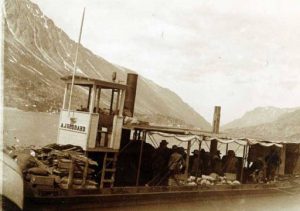 that very few people would be successful or not, but his plan was to be a transport boat to bring other prospectors to the gold fields. The A. J. Goddard made one trip to Dawson during the gold rush, was sold, and sank in a storm on Lake Laberge in 1901. I guess Goddard go out just in time, or maybe the endeavor was just not what he had in mind. The boat was rediscovered largely intact in 2008. On board the boat were artifacts of the period such as a gramophone with ontemporary recordings.
that very few people would be successful or not, but his plan was to be a transport boat to bring other prospectors to the gold fields. The A. J. Goddard made one trip to Dawson during the gold rush, was sold, and sank in a storm on Lake Laberge in 1901. I guess Goddard go out just in time, or maybe the endeavor was just not what he had in mind. The boat was rediscovered largely intact in 2008. On board the boat were artifacts of the period such as a gramophone with ontemporary recordings.

